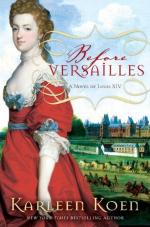|
This section contains 6,739 words (approx. 23 pages at 300 words per page) |

|
SOURCE: "Baroque or Burlesque? Aspects of French Comic Theatre in the Early Seventeenth Century," in The Modern Language Review, Vol. 79, No. 4, October, 1984, pp. 797–809.
In the essay that follows, Caldicott examines several common "burlesque" features of seventeenth-century comedy.
It is, of course, quite paradoxical that the term 'baroque' should still be widely used in literary criticism when nobody is entirely sure what it means. Following in the footsteps of Wölfflin and romantic criticism (which found an affinity with the baroque), Eugenio d'Ors took it to be an eternal element in the cycle of alternation in art between the regular and the irregular—an unending diastole and systole; in other words, there would always be a baroque and always a classical mode of creation. The existence of the one notion always implied the presence of the other. Jean Rousset, on the other hand, explored a more strictly defined period...
|
This section contains 6,739 words (approx. 23 pages at 300 words per page) |

|


